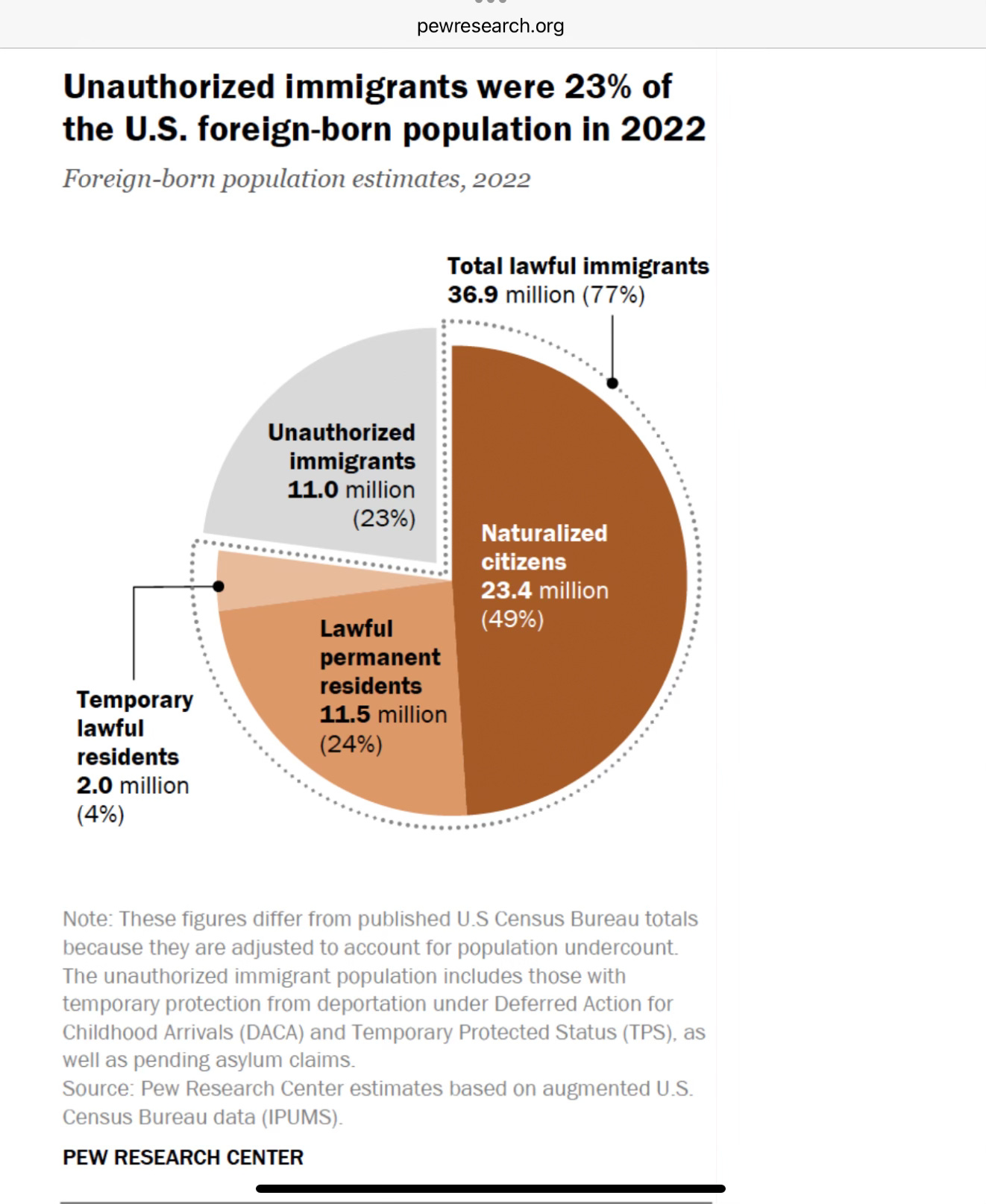Since unauthorized aliens are top of mind for Jacksonville’s City Council majority, we wonder: what do we know about these people? Or as some might characterize them, those people.
Council members, by an 11-7 majority vote, passed a bill last week prohibiting any organization in receipt of City grants from knowingly providing services to unauthorized aliens if those services are partially paid for by local tax money. Exempted from this sweeping command are “services for children, victims of domestic violence, labor trafficking, and/or sex trafficking, . . . individuals actively serving in the United States military, or for pregnant women.”
Also exempted are “grants for economic development,” for “medical services provided by Shands Jacksonville, Medical Center, Inc.,” and grants to the Duval County Health Department, particularly for “any public health service to any person which protects people in Duval County from the spread of infectious disease(s).”
Pity the poor person who must decide who’s in and who’s out.
It all seems to turn on that qualifying word knowingly, whose inclusion, together with the list of exempted services and persons, came from multiple amendments to the original bill, indicative of Council members’ contentious debate and how poorly conceived this legislation is.
Knowingly: “having or reflecting knowledge, information, or intelligence,” say our friends Merriam & Webster.
Which makes one ask: what do we know about these folks living and working right here in river city, whom federal immigration statues call unauthorized aliens, meaning immigrants not legally authorized to live or work in the United States?
How many live amongst us? What do they do?
Living with the Unauthorized
According to the Pew Research Center’s What we know about unauthorized immigrants living in the U.S., roughly 11 million unauthorized immigrants live in our country, representing 3.3% of a U.S. population of roughly 335 million people.
Notice that Pew uses unauthorized immigrants, whereas City Council uses unauthorized aliens citing a Florida statute, which in turn cites a federal statute. Nonetheless, immigrants and aliens refer to the same people.

These 11 million unauthorized live with another 11 million American native born or naturalized citizens, in 6.3 million households which represents fewer than 5% of 130 million households. The 11 million unauthorized immigrants include 850,000 unauthorized under-aged children, who live with authorized and unauthorized parents. In addition, Pew finds that “about 4.4 million U.S.-born children under 18 live with an unauthorized immigrant parent.”
In other words, 5+ million under-aged children live in mixed households, where one parent is here legally and one is here illegally. Imagine the constant fear these children experience, not knowing if today is the day Mama or Daddy will be arrested and deported.
Jacksonville and Florida
Florida is among four states with the largest number of illegal immigrants living in the U.S., with California, Texas, and New York the other three. This, the Pew report states, has been the case over the past 40+ years. Since 1990, Florida’s illegal immigrant population has grown from an estimated 240,000 or 1.8% of our total population of 12.9 million, to an estimated 1.2 million today or 5.4% of our total 22+ million population.
We’re Hiring
Nationally, 8.3 million unauthorized immigrants work, primarily in construction, service, and farming industries. Notably, Florida’s construction, agriculture, service, and farming industries employ 625,000 illegal immigrants, who make up 8% of Florida’s labor force.
If we know we don’t want these people in our country, why do we keep hiring them?
JAX Back of the Envelope
Locally, an estimated one million people live inside Jacksonville’s city limits, making each of us one in a million. Sixty-three percent or 635,000 people work, while thirty-seven percent of us are either under 18 or over 65 years of age and presumably do not work.
If 5.4% of Florida’s human population is unauthorized—1.2 million of 22+ million, according to Pew—then we can guesstimate that about 54,000 unauthorized immigrants live in Jacksonville (5.4% x 1 million).
If unauthorized immigrants make up 8% of Florida’s working population, as Pew finds, let’s assume that applies locally as well. If so, we have in the neighborhood of 50,000 unauthorized immigrants working locally.
Ask yourself: what work are these people doing? What if your hotel room is never cleaned? Or your favorite restaurant’s dishes aren’t presentable? Or you cannot hire a roof installer despite your insurance company insisting you purchase a new roof?
Could get ugly.
Knowingly
So, how knowledgeable are we? How many workers—legal or not—does Jacksonville need to change sheets in hotel rooms, wash dishes in the restaurant dish pit, build houses, repair roofs, and pick fruits and vegetables? Does anyone know?
Search engines count 2,600 restaurants, over 4,600 hotels, and claim that last year we built approximately 5,000 new single-family homes. In addition, Florida’s seasonal farm workers total 150,000-200,000 annually.
What happens to local businesses, small and not so small, if ICE conducts sweeping raids in Jacksonville and deports thousands of workers? Who fills these jobs? Does the Chamber of Commerce have data? A plan?
Theory land is always fun, but facts matter.
No matter what you think about our country’s unauthorized immigrant deportation policies, it behooves us to know what we are talking about. Fewer histrionics, less anger, more knowledge-based-in-factual-information would serve us well, and especially coming from our elected City Council.
And a little more honesty about our universal love of cheap, human labor is in order.




Thanks Rick and Mary. I hope others will share their stories.
Don’t get me started on this issue. The rich get richer on the backs of cheap immigrant labor , pretending they did not know their status.